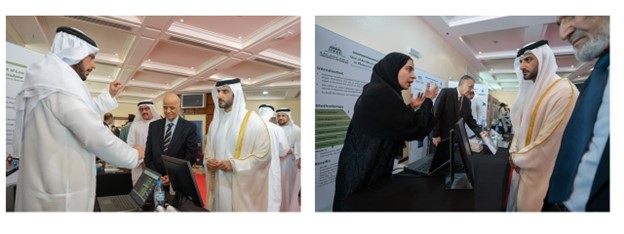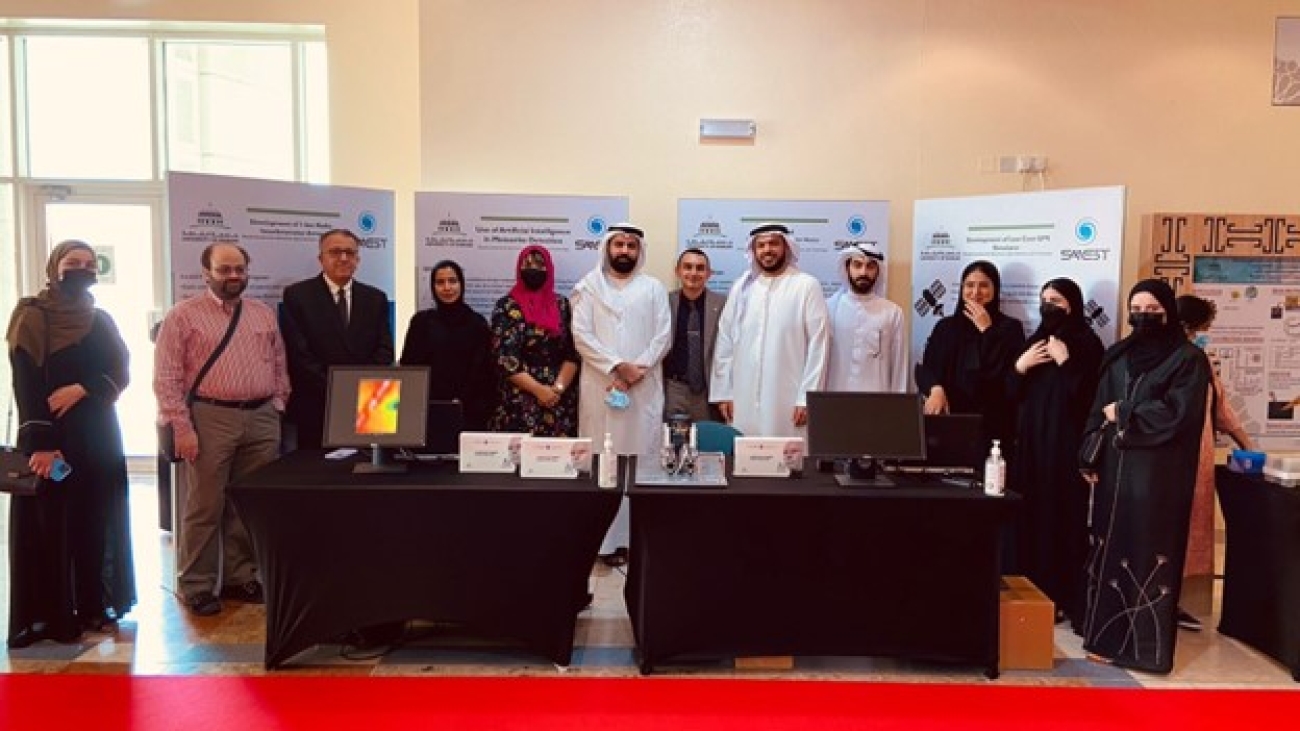- GNSS: Development of a GNSS Simulator:
This work presents the initial results of a GPS simulator designed by emulating a similar environment (hardware and software) to the GPS satellites. The simulator will enable researchers to test, operate, and experiment on GNSS payloads within a lab environment. It will also help assess some of the most critical errors that GNSS systems experience in space and on the ground, such as satellite clock error, receiver noise, and multipath, which pose different challenges.
- Radio Astronomy: Development of 1-km Radio Interferometer Radio Array:
Nine identical 5-meter diameter radio telescopes are used to simulate a radio interferometer with a size equivalent to a 1-km dish. The array mirrors the "Y" configuration used by the Karl G. Jansky Very Large Array (VLA) in New Mexico, USA. The system observes the 21 cm neutral Hydrogen line emission at 1420 MHz. The synthesized beam in this configuration measures 0.0114° (41 arcsec), simulating the angular resolution of a 1-km diameter single dish antenna with a collection area equal to a 15-meter diameter dish.
- CubeSat: Design of a SolSat – A Space Weather 3U CubeSat:
SolSat's primary mission objective is to monitor the ionosphere's daily behavior due to the Sun's activities in the Low Earth Orbit (500~600 Km). The secondary mission objective is capacity building in various forms. The primary Payload of the SolSat mission, besides the different operating Bus subsystems (ADCS, EPS, OBC, etc.), is the solar particle detector (SPD) to measure the charge particles' density and energies of electrons, protons, and ions in the energy range of 0.1 - 100 MeV. The operational duration of the mission in space is expected to be 30 months.
- Space Artificial Intelligence: Use of AI in Meteorite Detection:
Artificial Intelligence (AI) techniques have been developed and coupled with an Unmanned Aerial Vehicle (UAV) to facilitate the hunt for meteorites. A deep learning object detection algorithm known as You Only Look Once (YOLO) was trained on the meteorite collection available at SAASST and terrestrial rocks from the neighboring area.




